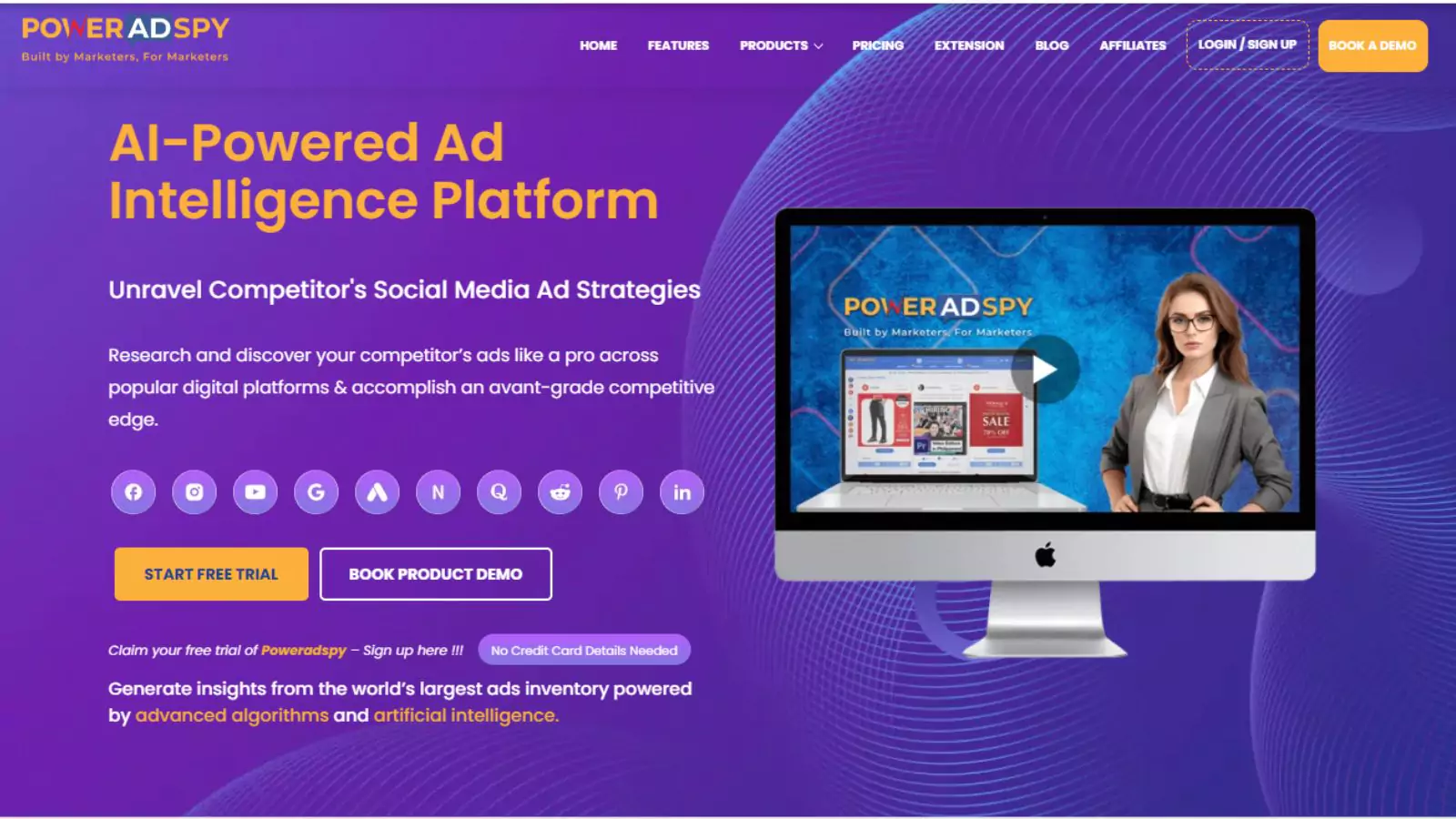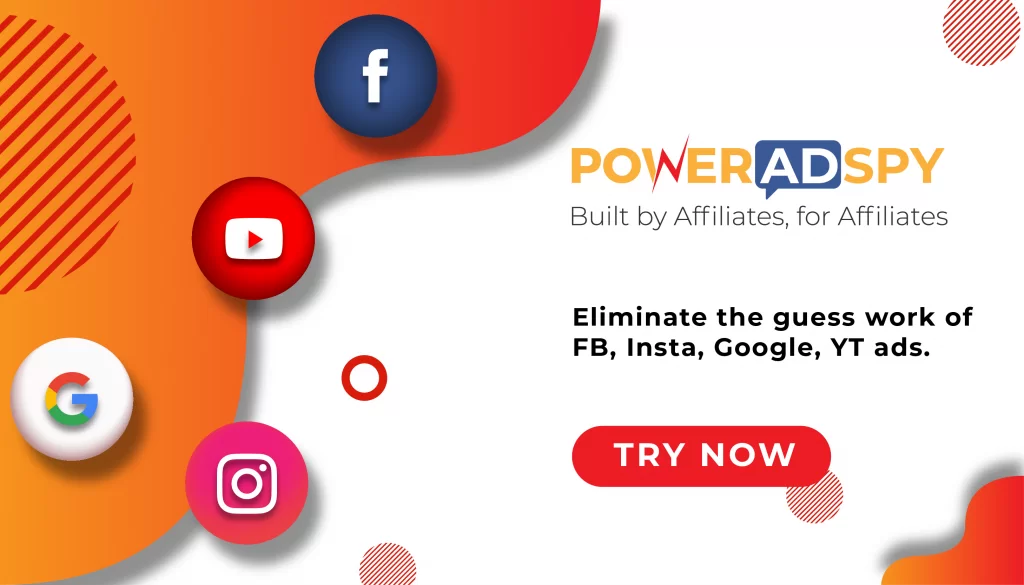The Ultimate Guide To Social Advertising: Examples, Types & Best Practices
Social advertising has revolutionized the way businesses connect with their audiences. Unlike traditional advertising, it leverages the power of social media platforms to reach users where they spend most of their time. Whether it’s promoting a product, driving website traffic, or increasing brand awareness, social advertising offers targeted, cost-effective solutions that can deliver impressive results.
In this blog, we’ll dive into what it is, why it’s essential in today’s digital landscape, and how you can use it to achieve your marketing goals.
Listen To The Podcast Now!
What Is Social Advertising?
Social Advertising refers to a form of advertising where businesses and organizations leverage social media platforms to promote their products and services to a targeted audience.
It involves creating and placing ads on platforms like Facebook, Instagram, Twitter, LinkedIn, and others to reach and engage with specific user groups or demographics. These ads can take various forms, such as carousel ads, display ads, video commercials, or sponsored posts. Social media platforms provide a vast user base and detailed user data, enabling businesses and organizations to tailor their messages to specific demographics based on factors- like age, gender, location, interests, and online behavior.
The Evolution Of Social Advertising
Social ads have experienced significant growth over time, reflecting the shifting landscape of digital marketing and the increasing importance of social media platforms in our daily lives. Several factors contribute to the continued expansion of social ads:
- Growing User Base: Social media platforms like Facebook, Instagram, Twitter, and LinkedIn, as well as newer entrants, have seen a substantial rise in user numbers. These platforms attract a diverse range of demographics.
- Increased User Engagement: With users spending considerable time on social media, these platforms offer advertisers a prime opportunity to connect with their target audiences. Social media’s engaging and interactive nature enhances ad visibility and effectiveness.
- Advanced Targeting Capabilities: Social media networks provide sophisticated targeting options, enabling marketers to reach specific audiences based on demographics, interests, and behaviors. To streamline this process leverages social ad intelligence tools like PowerAdSpy. It allows you to peek into successful ad strategies employed by competitors. This deeper understanding enables you to fine-tune your targeting, ensuring your campaigns connect with the right audience more effectively.
- Variety of Ad Formats: The evolution of social advertising has introduced numerous ad formats, including image ads, video ads, carousel ads, stories, and sponsored content. This variety enables advertisers to select formats that connect with their target audience and match their campaign objectives.
- Mobile Accessibility: The widespread use of smartphones has made it essential for social media advertising to be mobile-friendly. With users constantly on the move, advertisers need to ensure their ads are optimized- for mobile devices.
Social advertising continues to evolve with the changing digital landscape, driven by user engagement, advanced targeting, and diverse ad formats. In this digital environment, tools like PowerAdSpy emerge as game changers, providing crucial insights into successful ad strategies and helping you refine your targeting to ensure your campaigns achieve maximum impact and relevance.
PowerAdSpy: Advanced AI-ad Intelligence Tool
PowerAdSpy is an advanced ad intelligence tool designed to track competitors’ social media ads. It offers essential insights into ad effectiveness, creative tactics, targeting strategies, and audience interaction.
Key features include:
- Comprehensive Ad Database: The tool provides access to an extensive database of ads across various platforms. This allows users to explore successful ad campaigns, benchmark against competitors, and find inspiration for their ads.
- Real-Time Analytics: PowerAdSpy delivers real-time analytics, enabling marketers to monitor ad performance and make data-driven decisions on the fly. This helps in quickly adapting strategies to changing market conditions.
- Competitor Analysis: With its robust competitor analysis features, PowerAdSpy allows users to track and analyze competitors’ ad campaigns. This includes studying their ad strategies, budget allocations, and performance metrics.
- Customizable Reports: Users can generate detailed, customizable reports that highlight key performance indicators, trends, and actionable insights. This aids in strategic planning and improving ad effectiveness.
- Geo-Targeting Precision: Leveraging its extensive database of millions of ads, PowerAdSpy delivers highly accurate insights into the geo-targeting strategies of your competitors. This allows you to pinpoint specific audiences who are readily interested in your products or services.
PowerAdSpy is a powerful tool for elevating social advertising strategies. Its advanced AI capabilities make it an indispensable asset for marketers aiming to optimize their social media campaigns and achieve superior results.
Types Of Social Advertising
- Display Advertising: These are banner ads that appear at the top or sides of websites or social media platforms. Typically featuring a call-to-action (CTA), text, and images, display ads are effective for building- brand awareness.
- Videos: Videos use both sound and motion to convey a message. These can be standalone videos, stories, or in-feed clips. Platforms such as YouTube, Facebook, Instagram, and TikTok provide a range of video advertising choices.
- Carousel Ads: Carousel ads allow users to scroll through a series of images or videos. This format enables advertisers to showcase multiple products, services, or messages in a single ad, enhancing engagement.
- Sponsored Posts: Sponsored posts show up in users’ social media feeds as native advertisements. They blend with regular content but are tailored- to a specific audience. These posts usually have a label to indicate their sponsored nature.
- Story Advertising: Story ads are full-screen, vertical ads that appear briefly on platforms like Facebook, Instagram, and Snapchat. Designed to capture attention quickly, they provide an immersive advertising experience.
Advantages Of Social Media Advertising
In today’s world, social media dominates our lives. Back in 2018, over 3.2 billion people were using social media, with 73% of Americans active on multiple social networking sites. Given the extensive reach and significance of these platforms, social media advertising offers numerous benefits:
Brand Awareness:
Social advertising is a powerful tool for new startups and businesses looking to establish themselves amidst competition. It allows them to reach a broad audience interested in their products, apps, or services. Features like likes, comments, and tags facilitate rapid brand awareness and influence the social circles of users.
Improved Conversion Rates:
Social media ads capture user attention more effectively than traditional channels due to their targeted nature. By leveraging past behavior and search history, social ads are shown to users in contexts where they are most engaged. The ease of interaction and quick response times contribute to higher conversion rates.
Cost-Effective ROI:
Social ads offer a cost-effective approach while providing- precise user data and excellent targeting capabilities. Advertisers can assess and optimize ad performance efficiently, making it an ideal solution for startups and businesses working within a budget.
Brand Loyalty:
Effective social advertising helps maintain brand visibility and reinforces customer loyalty. Loyal customers tend to spend more and act as brand ambassadors, bringing in new customers through their recommendations and social networks.
Marketing Insights:
Social ads provide valuable insights into customer sentiments and campaign performance through metrics like ad impressions and engagement. With advanced ad intelligence tools like PowerAdSpy, advertisers can delve deeper into these metrics to understand what works, refine their campaigns, and enhance branding strategies—ultimately driving increased website traffic and sales.
How Social Media Advertising Works?
Social media advertising entails creating and sharing paid social advertising content across social media platforms to reach a targeted audience.
By leveraging the rich user data available on platforms such as Facebook, Instagram, Twitter, and LinkedIn, marketers can refine their audience targeting based on demographics, interests, and behaviors.
It allows them to deliver highly tailored and relevant ads to specific user segments.
Various ad formats, including carousel ads, sponsored posts, photos, and videos, can be utilized. Social media ads are most effective when they capture interest, enhance brand visibility, drive website traffic, and encourage desired actions such as clicks, likes, or purchases.
Additionally, social media platforms often provide analytics tools to help marketers evaluate ad performance and make necessary adjustments.
Best Practices For Creating And Executing Social Media Ads
Social media ad campaign offers a cost-effective way to reach targeted audiences using advanced tools. Whether you’re a startup or an established brand, focusing on these best practices can enhance the effectiveness of your social ads:
Choose The Right Advertising Platform:
Selecting the platform that aligns with your brand advertising goals is crucial. Understanding which platform best fits your product or service helps you reach the appropriate audience. Each platform has its unique user base, so consider whether social media or other online platforms are the best fit for your campaign.
Define Your Ad Budget:
It’s important to determine whether you’ll use cost-per-impression (CPM) or pay-per-click (PPC) for your ads. CPM is ideal for building brand awareness, whereas PPC is more effective for driving conversions. Your choice will guide how you optimize your advertising strategy and allocate- your budget.
Establish Guidelines and Create Ad Assets:
Set clear boundaries and standards for your ad creatives. Follow branding guidelines and start with a strong foundation, including logo, design, colors, style, copy, and fonts. Decide on the tone of your ads- elegant, dramatic, or simple and select assets that align with these preferences.
Select Appropriate Ad Formats:
Choose ad types that best convey your message. Consider creating videos with the following formats:
- Basics in Motion: Animated videos showcasing product features or gameplay.
- Brand in Motion: Videos highlighting the brand with dynamic visuals.
- Benefits in Motion: Videos start with static content that transitions to highlight product benefits.
- Demo in Motion: Videos showcasing a product in action and demonstrating how it works.
Optimize and Aim for Excellence: To optimize your ads effectively, monitor key performance indicators (KPIs) and conduct tests to refine your approach. Ensure that your- video ads are engaging and practical, aiming to maximize reach and impact with each campaign.
Also Read:
5 Most Valuable Methods Of Social Media Advertising
Social Media Ad Campaign : Is It Just For Traffic?
5 Direct Response Advertising Tips For Better Campaigns
Top Examples Of Effective Social Advertising Across Different Platforms
Here are some specific social advertising examples from various platforms:
Examples of Social Advertising
Dove’s Real Beauty Campaign On Facebook and Instagram: Dove’s Real Beauty Campaign aimed to challenge traditional beauty standards. Through Facebook and Instagram, Dove shared inspiring messages and videos promoting body positivity and self-acceptance. The campaign encouraged users to share their genuine, unretouched photos, fostering a community around the brand’s message.
Airbnb’s “We Accept” Campaign On Twitter: In response to global issues like prejudice and discrimination, Airbnb launched the “We Accept” campaign on Twitter. This campaign emphasized Airbnb’s commitment to inclusivity and showcased the diversity of its hosts, reinforcing the brand’s stance on acceptance.
P&G’s “Thank You, Mom” On YouTube and Facebook: Procter & Gamble’s “Thank You, Mom” campaign became a poignant success, particularly during the Olympics. P&G used Facebook and YouTube to share emotional videos celebrating the role of mothers, effectively connecting with audiences on an emotional level.
These examples illustrate how businesses use various formats and targeting options to engage their audience and drive specific actions.
Wrapping Up
Social advertising has proven to be a dynamic and essential component of modern marketing strategies. By leveraging the extensive reach and precise targeting capabilities of social platforms, businesses can effectively engage with their audience, drive meaningful interactions, and achieve their marketing goals.
Ad spy tools like PowerAdSpy can enhance your approach by providing valuable insights into successful ad strategies and competitor performance. As social media continues to evolve, staying abreast of the latest trends and innovations in social ads will be crucial for maximizing your campaign’s impact.
Embrace these insights, refine your strategies, and watch as your social ads efforts yield impressive results.
FAQs
Q. What is the main aim of social advertising?
Social advertisement targets audiences’ demographics based on customers browsing histories. This helped companies understand users’ interests and target a specific group of users.
Q. How can businesses measure the success of their social advertising campaigns?
Businesses can measure the success of their social advertising campaigns using metrics such as click-through rates (CTR), conversion rates, impressions, and engagement levels. Social media platforms provide analytics tools to track these metrics and assess campaign effectiveness.
Q. What are some common mistakes to avoid in social advertising?
Common mistakes in social advertising include poor targeting, neglecting to test different ad variations, having a weak call-to-action, failing to monitor and adjust campaigns regularly, and not aligning ads with the audience’s interests.










